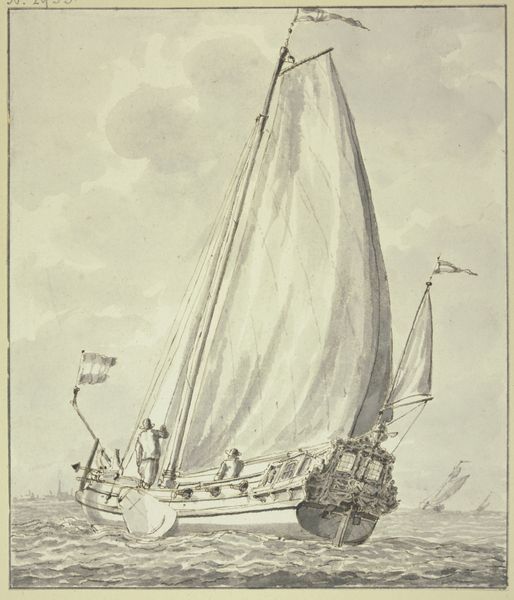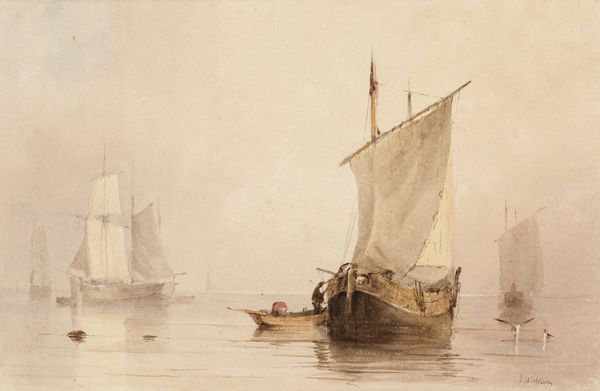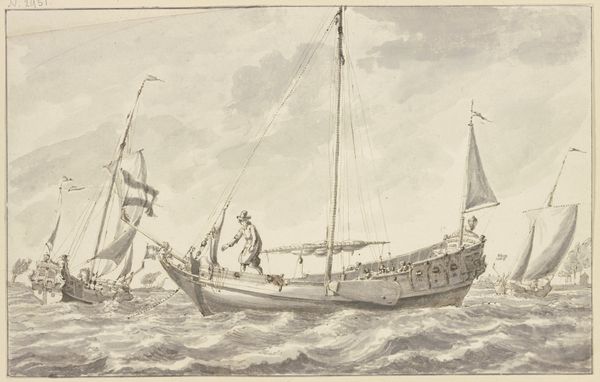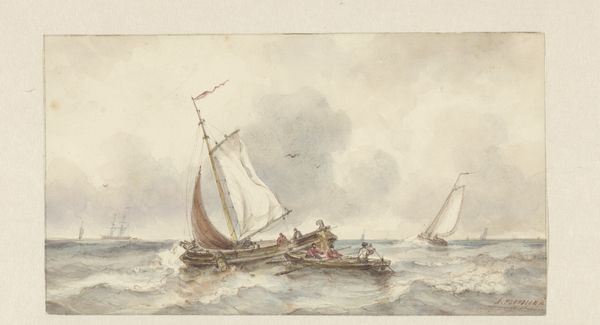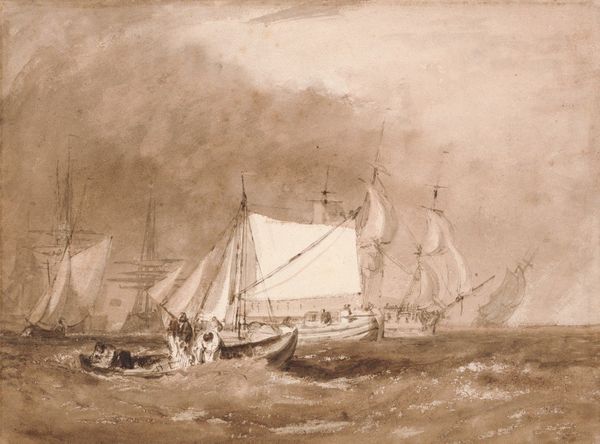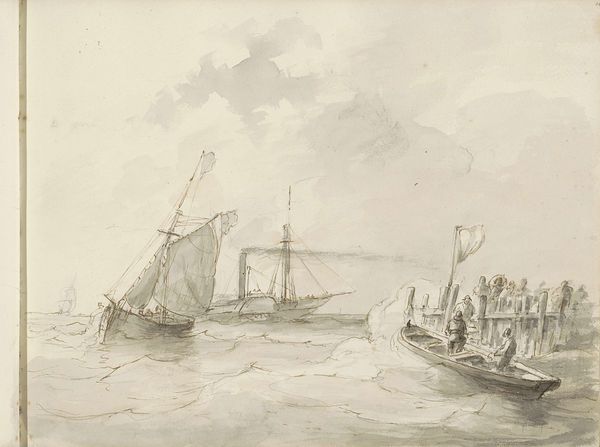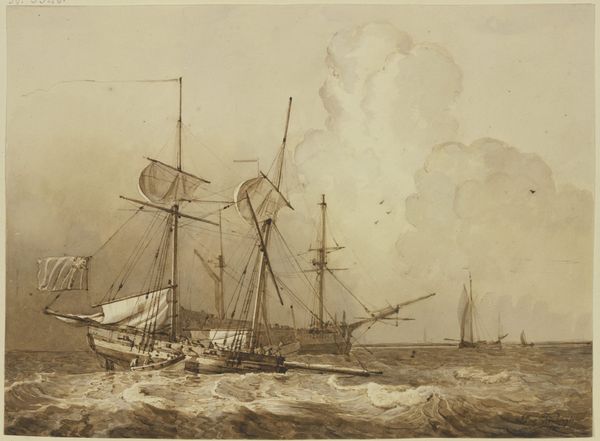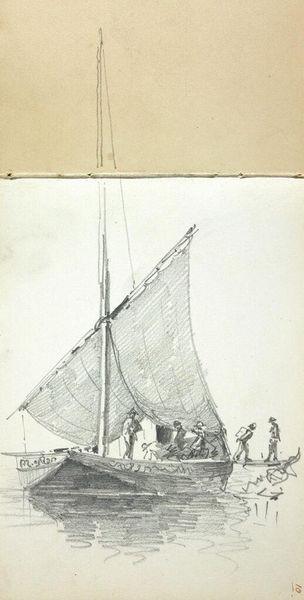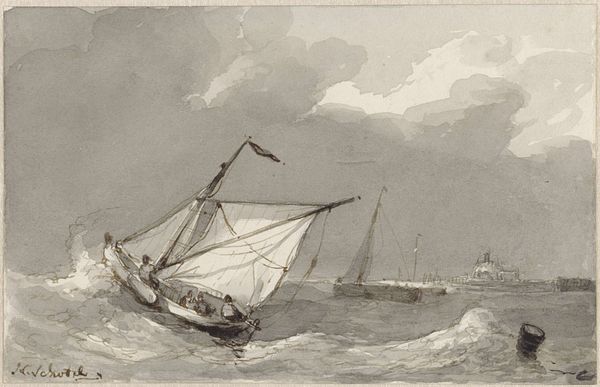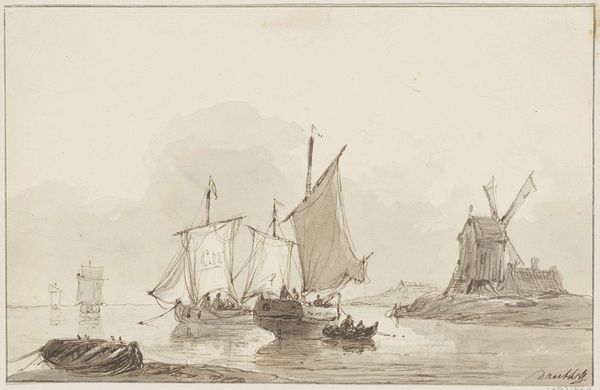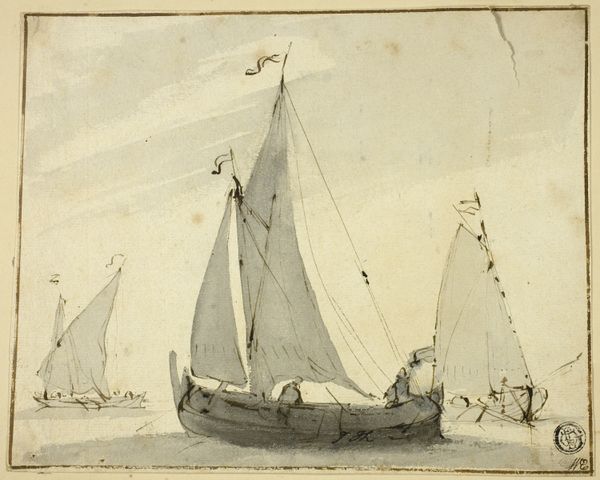
Dimensions: support: 340 x 244 mm
Copyright: CC-BY-NC-ND 4.0 DEED, Photo: Tate
Curator: Samuel Prout's "Fishing Boats, Hastings" presents us with a watercolor sketch, its dimensions a modest 340 by 244 mm. Editor: It’s rather beautiful, melancholic even. The muted tones and skeletal forms of the boats evoke a sense of quiet resignation. Curator: Indeed. Consider the materiality. The rough paper, the thin washes of color...it speaks to a working process, a direct engagement with the subject. These boats, vital to the local economy, are rendered with a sensitive, almost utilitarian approach. Editor: I am struck by how the boats loom, almost like watchful figures. Boats are such loaded symbols, aren’t they? Voyages, returns, the precariousness of life... the figures clustered at the base seem dwarfed, almost seeking shelter. Curator: A sharp observation. The positioning of the figures, clustered around the base of the boats, indicates the labor involved in fishing and the sense of community. Editor: It’s a powerful image of the human condition, mirrored in the enduring symbolism of the sea and vessels. Curator: I agree. Prout’s artwork allows us to consider both the practical labor and the deeper symbolic resonances present in this industry. Editor: It certainly gives one pause to consider how something so grounded in the everyday can also carry such potent emotional weight.
Comments
tate 8 months ago
⋮
http://www.tate.org.uk/art/artworks/prout-fishing-boats-hastings-t01010
Join the conversation
Join millions of artists and users on Artera today and experience the ultimate creative platform.
tate 8 months ago
⋮
Despite indifferent health, between 1820 and 1846 Prout regularly scoured Normandy, the Low Countries, the Rhine Valley, Switzerland, Venice and elsewhere in search of picturesque topographical subjects. The warmly-coloured drawings of old buildings and towns that he exhibited and sold with ease reached a wider audience in the form of engravings and lithographs. Prout was based in Hastings for several years before moving to Denmark Hill in South London in 1844, where his new neighbour was John Ruskin, a fervent admirer. Gallery label, September 2004

